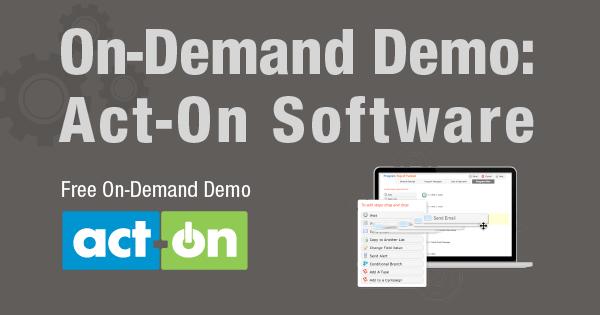“’If you fail to plan, you are planning to fail” … boy, did Ben Franklin get that one right.
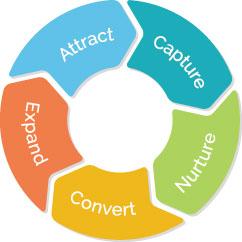 Let’s face it, agencies don’t have it easy. Managing marketing campaigns for multiple clients is a balancing act in itself. Serving each client really well is another thing altogether, yet it’s key to satisfying them and retaining their business.
Let’s face it, agencies don’t have it easy. Managing marketing campaigns for multiple clients is a balancing act in itself. Serving each client really well is another thing altogether, yet it’s key to satisfying them and retaining their business.
So what’s the best way to make sure you’re delivering stellar results for each of your customers? Take the advice of wise Mr. Franklin and have a plan, of course. Here’s how:
Develop a Strategy for Every Account in Five Areas
To make sure you’re providing top-tier service to every one of your clients, it’s essential to create five main strategies for each account.
1. Strategically Define the Target Audience
Who do your clients sell to? You will need to understand the world your clients – and their buyers – live in, how those buyers consume information, and what they base decisions on. Develop a target audience of people who are the intended recipients of messages, advertising and marketing efforts. If you don’t know who you’re talking to, it’s guaranteed that your efforts will be wasted and fruitless. Your strategy should include defining who you will not pursue, so you don’t spend resources on low-potential targets.
Buyer Personas
To refine the targeting process further, you’ll want to create “buyer personas” – semi-fictional representations of target buyers that will enable your team to plan effective segmentation, lead qualification, and content creation for your clients.
Define the recipients of your messages by role, title, and specific interests/challenges these individuals face. Each buyer persona should include a short bio of a typical customer, a description of the person, and information on:
- Buyer’s background
- Daily activities/behaviors
- Current solutions to the problem
- What’s important to this buyer
 2. Messaging/Positioning Strategy
2. Messaging/Positioning Strategy
Each business you represent must have a strong, unified set of messages that encapsulate what that business does, how it’s different, and what value it offers. Once that messaging is determined, you’ll consistently execute it by incorporating it into all forms of communication.
Your client may already have a set of messages and a marketing position, but many do not – or they’ve created ones that miss the mark or aren’t compelling. This is where your creativity comes in. You need to construct a positioning statement that’s distinctive and credible and a set of messages to support it, or your target market simply won’t pay attention.
The best approach: tell a story. Get folks interested, share something they can relate to. That’s the story you can share across the board – to prospects, investors, and the press. And satisfied customers can pick your messages up and repeat them in testimonials and success stories.
3. Content Strategy
Now you’ll apply your messaging strategy to the target audience. Great content galvanizes brands and enhances revenue. You’ll need to define the content each account needs to produce to achieve these goals.
Start by asking questions:
- What do we want the content to accomplish?
- What specific actions do we want prospects to take?
- What types of content will we publish?
- How do we come up with and repurpose content?
- How will we measure and evaluate the content?
Next, use an editorial content calendar to plan content development, determine when you’ll publish the content, and where (website, mobile, social media, or a combo).
4. Marketing Technology Strategy
Each client may need a different technology configuration, and your next client might pick you over another agency for your expertise in using certain marketing technologies.
If you begin with marketing automation, you’ll have the gold-standard basics like email, website visitor tracking, landing page creation, list segmentation, lead scoring, form creation, tracking and reporting, and more. If you choose an open marketing automation platform, you’ll have the flexibility to add whatever tools you need (or that your client asks for) with ease, including a customer relationship management (CMS) system, or a business intelligence (BI) system. You can also add point tools, such as advanced social media management. You’ll have the freedom to build a marketing technology stack that serves the different strategies you’ll employ for different clients. One client might have a long sales cycle and need technology that makes it easy to deploy sophisticated nurture programs. Another, with a very short sales cycle, might need a well-planned auto-responder program.
By having the right technology in place, you’ll show that you can execute, and also give evidence that you can successfully keep up with marketing’s rapid evolution. Your tech chops can save your clients the expense of buying their own, the cost of making mistakes, the time and trouble of getting up to speed, and the overhead of on-staff experts.
5. Marketing Automation Programs Strategy
Reputable research firms consistently agree on this point: Marketing automation technology enables the strategic programs – including lead identification, qualification, segmentation, and nurturing – that make it the most powerful revenue contributor in top-performing organizations. Your clients are reading these reports, too, and wondering how they can get these benefits. (You should be the answer to that question.)
Develop strategies across the buyer’s journey for your clients. Lifecycle marketing gives you lots of options for getting your client in front of prospects early, establishing their expertise, delivering personalized content to their target audiences, managing marketing efforts across multiple digital channels, automating manual processes, and tracking results. Once you set up automated programs, such as lead scoring to qualify prospects, they run according to your schedule, saving you time and manual effort. The time you save can go into providing more services for your clients.
The MA programs you choose to employ and manage for your clients – from search and social marketing to email marketing to lead nurturing and qualification – will result in email clicks, website visits, content downloads, measurable results and more, proving your agency’s value.
Create a Marketing Strategy for Every Stage of the Buyer’s Lifecycle
Now you put it all together and execute. By focusing on the buyer’s lifecycle by stage, you can use the content to reach the targeted buyer where they are, delivering the right message to the right person at the right time. Here are the stages and the strategies:
1. Attract
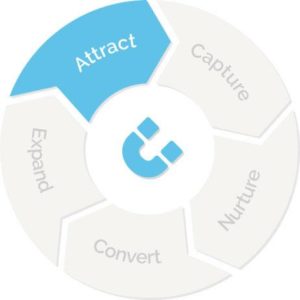 This is the stage where you find ways for your client to have a presence in places the buyer is likely to look, and attract the buyer’s attention. This stage includes SEO optimization, advertising, social media, trade shows, and perhaps list acquisitions. The buyer is actively doing research now, and that should lead them to your client, if you execute well enough in the Attract phase.
This is the stage where you find ways for your client to have a presence in places the buyer is likely to look, and attract the buyer’s attention. This stage includes SEO optimization, advertising, social media, trade shows, and perhaps list acquisitions. The buyer is actively doing research now, and that should lead them to your client, if you execute well enough in the Attract phase.
The goal is to establish brand awareness and the beginning of a trusted relationship, and to move quickly to engagement and interaction.
2. Capture
Your client’s goal (and yours) is to gain the buyer’s contact information, and permission to contact them. 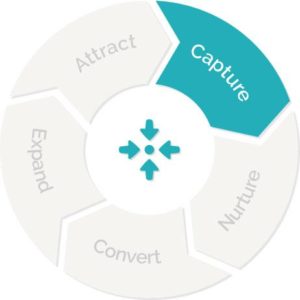 Your strategy will rest on giving people the opportunity to give you their information, and a compelling reason for them to do so. You can offer a simple form they must fill out before they can access particularly valuable information, such as strategy books, deep research, design guides, and best practices.
Your strategy will rest on giving people the opportunity to give you their information, and a compelling reason for them to do so. You can offer a simple form they must fill out before they can access particularly valuable information, such as strategy books, deep research, design guides, and best practices.
These first forms should have a very light touch, and typically only ask for a person’s first name, last name and email address. (Later in the process, when the buyer is more committed and trusts you more, you can ask for more information via progressive forms.)
3. Nurture
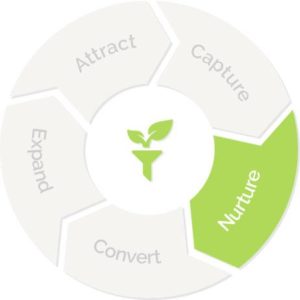 This is the buyer’s deliberation phase. You want to keep your client top-of-mind with those buyers, and deepen the relationship. Nurture the buyer’s interests based on what you know about them already (via the capture process) and what you learn about them as they interact. A good marketing automation platform will give you visibility into the searches and research a prospect has performed using your digital assets, so you aren’t guessing at what buyers want – you’ll know.
This is the buyer’s deliberation phase. You want to keep your client top-of-mind with those buyers, and deepen the relationship. Nurture the buyer’s interests based on what you know about them already (via the capture process) and what you learn about them as they interact. A good marketing automation platform will give you visibility into the searches and research a prospect has performed using your digital assets, so you aren’t guessing at what buyers want – you’ll know.
Once you see where their interests lie, the goal is to guide them through a process that keeps them interested and channels them toward choosing your client. One good strategy is to send a series of messages that present solutions, products, or services. Make sure to include clear calls-to-action (such as “Click here to see a Demo” or “Click here to Contact Us”) to maximize the opportunities for buyers to engage in behaviors that indicate sales-readiness.
You’ll use lead scoring to gauge the engagement level of these buyers, and qualify them. Once their lead scores pass the threshold you set, you can automatically push them into the appropriate lead stage using segmentation.
4. Convert
This is the buyer’s decision stage.  After your team has invested the time and energy into marketing during each stage of the buyer’s lifecycle and generated a ton of hot leads, it’s time to pass them off to your clients’ sales team to make the connection and help the buyer make that decision.
After your team has invested the time and energy into marketing during each stage of the buyer’s lifecycle and generated a ton of hot leads, it’s time to pass them off to your clients’ sales team to make the connection and help the buyer make that decision.
Sales people can use the marketing automation platform (right from their CRM dashboard) to give them visibility into who the most engaged leads are, which messages you’ve sent to them, and what their behavior has been, so sales knows exactly where to begin a conversation and what questions are likely. Given this wealth of buyer intelligence, your client’s sales closing team can expect:
- Quicker engagement
- Shorter sales cycles
- Bigger deals
- Higher close rates
- Improved quota retirement
5. Expand
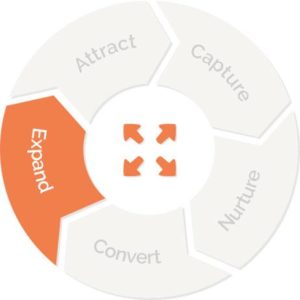 This part of the process usually isn’t on the buyer’s radar through the process, but it should be on yours. You’ve worked hard to generate highly qualified leads for sales and they’ve successfully converted those leads to customers. So now what? It’s time to work on keeping them happy so they stick around to keep paying your clients!
This part of the process usually isn’t on the buyer’s radar through the process, but it should be on yours. You’ve worked hard to generate highly qualified leads for sales and they’ve successfully converted those leads to customers. So now what? It’s time to work on keeping them happy so they stick around to keep paying your clients!
Here’s a sampling of how you can help your accounts maximize revenue without having to invest time in new campaign development:
- Cross selling and upselling
- Ongoing social media efforts
- Internal marketing
- Tradeshow promotion
- Event marketing
- New product and service offerings
Professional Services
Giving proper attention to every one of your accounts may seem a bit overwhelming, but you don’t have to do it all yourself. One time-tested strategy is to spend your time playing to your own strengths, whether those be creative, planning, content creation, SEO, or some other specialty, and bring in outside help for strategic services. The professional services team associated with your MA platform is one good option, and if you’d like to outsource tasks such as creating automated programs, segmenting and managing lists, or customizing an automation strategy, they’re a natural fit. Think of this team like an auxiliary bench: You can call in specialty players as you need them, without having to put them on the permanent payroll.
It’s Up To You
Whether you tackle it yourself or seek guidance from marketing automation professionals, making sure each of your clients receives a consistent level of service and attention will result in far better results for them and increased customer satisfaction and retention for you. Using lifecycle marketing, you can optimize results at every stage, including the higher-profit retention stage. It’s all about planning to win. Ben would be proud.
If you’re ready to start implementing your own marketing strategy to address each stage of your buyer’s lifecycle, take a video tour of Act-On to see how marketing automation can help you achieve your goals at each stage of the cycle. 